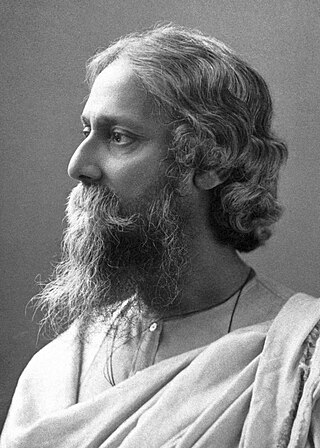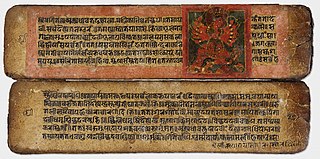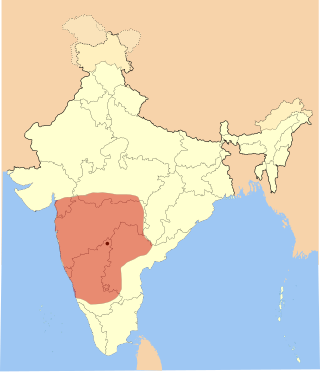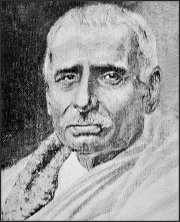
A genre of arts criticism, literary criticism or literary studies is the study, evaluation, and interpretation of literature. Modern literary criticism is often influenced by literary theory, which is the philosophical analysis of literature's goals and methods. Although the two activities are closely related, literary critics are not always, and have not always been, theorists.

Atīśa was a Buddhist religious leader and master from Bengal. He is generally associated with his work carried out at the Vikramashila monastery in Bihar. He was one of the major figures in the spread of 11th-century Mahayana and Vajrayana Buddhism in Asia and inspired Buddhist thought from Tibet to Sumatra. He is recognised as one of the greatest figures of medieval Buddhism. Atiśa's chief disciple, Dromtön, was the founder of the Kadam school, one of the New Translation schools of Tibetan Buddhism, later supplanted by the Gelug tradition in the 14th century which adopted its teachings and absorbed its monasteries.

Bengali poetry is a rich tradition of poetry in the Bengali language and has many different forms. Originating in the Bengal region of South Asia, the history of Bengali poetry underwent three successive stages of development: poetry of the early age, the Medieval period and the age of modern poetry. All ages have seen different forms of poetry and poetical tradition. It reached the pinnacle during the Bengali Renaissance period although it has a rich tradition and has grown independent of the movement. Major Bengali Poets throughout the ages are Chandidas, Alaol, Ramprasad Sen, Michael Madhusudan Dutt, Nabinchandra Sen, Rabindranath Tagore, Dwijendralal Ray, Satyendranath Dutta, Kazi Nazrul Islam, Jibanananda Das, Jasimuddin, Sukanta Battacharya, Al Mahmud.

Bankim Chandra Chattopadhyay was an Indian novelist, poet, essayist and journalist. He was the author of the 1882 Bengali language novel Anandamath, which is one of the landmarks of modern Bengali and Indian literature. He was the composer of Vande Mataram, written in highly Sanskritised Bengali, personifying Bengal as a mother goddess and inspiring activists during the Indian Independence Movement. Chattopadhayay wrote fourteen novels and many serious, serio-comic, satirical, scientific and critical treatises in Bengali. He is known as Sahitya Samrat in Bengali.
Indian literature refers to the literature produced on the Indian subcontinent until 1947 and in the Republic of India thereafter. The Eighth Schedule to the Constitution of India has 22 officially recognised languages. Sahitya Akademi, India's highest literary body, also has 24 recognised literary languages.

Sanskrit literature broadly comprises all literature in the Sanskrit language. This includes texts composed in the earliest attested descendant of the Proto-Indo-Aryan language known as Vedic Sanskrit, texts in Classical Sanskrit as well as some mixed and non-standard forms of Sanskrit. Literature in the older language begins with the composition of the Ṛg·veda between about 1500 and 1000 BCE, followed by other Vedic works right up to the time of the grammarian Pāṇini around 6th or 4th century BCE.

Civaka Cintamani, also spelled as Jivaka Chintamani, is one of the five great Tamil epics. Authored by a Madurai-based Jain ascetic Tiruttakkatēvar in the early 10th century, the epic is a story of a prince who is the perfect master of all arts, perfect warrior and perfect lover with numerous wives. The Civaka Cintamani is also called the Mana Nool. The epic is organized into 13 cantos and contains 3,145 quatrains in viruttam poetic meter. Its Jain author is credited with 2,700 of these quatrains, the rest by his guru and another anonymous author.
Brahmo Samaj is the societal component of Brahmoism, which began as a monotheistic reformist movement that appeared during the Bengal Renaissance.
Mahanubhava refers to Krishnaite Hindu denomination in India that was founded by Sarvadnya Shri Chakradhar Swami ,an ascetic and philosopher who is considered as a reincarnation of Krishna by his devotees Some sources list the founders as Chakrapani and Govinda Prabhu with Chakradhara as the first "apostle" and propagator of Mahanubhava Pantha. Mahanubhava Sampradaya was formally formed in modern-day Varhad region of Maharashtra in 1267 CE. It has different names such as Jai Krishni Pantha in Punjab and Achyuta Pantha in Gujarat. Mahanubhava Pantha was also known as Paramarga by its followers in 13th century. Nagadevacharya, also known as Bhatobas, became the head of Sampradaya after Chakradhara.

Bengali literature denotes the body of writings in the Bengali language and which covers Old Bengali, Middle- Bengali and Modern Bengali with the changes through the passage of time and dynastic patronization or non-patronization. Bengali has developed over the course of roughly 1,300 years. If the emergence of the Bengali literature supposes to date back to roughly 650 AD, the development of Bengali literature claims to be 1600 years old. The earliest extant work in Bengali literature is the Charyapada, a collection of Buddhist mystic songs in Old Bengali dating back to the 10th and 11th centuries. The timeline of Bengali literature is divided into three periods: ancient (650–1200), medieval (1200–1800) and modern. Medieval Bengali literature consists of various poetic genres, including Hindu religious scriptures, Islamic epics, Vaishnava texts, translations of Arabic, Persian and Sanskrit texts, and secular texts by Muslim poets. Novels were introduced in the mid-19th century. Nobel laureate Rabindranath Tagore is the best known figure of Bengali literature to the world. Kazi Nazrul Islam, notable for his activism and anti-British literature, was described as the Rebel Poet and is now recognised as the National poet of Bangladesh.
Gurunath is a commonly used term when praising what is considered by devotees the ultimate source of compassion, love and truth - irrespective of sectarian divides whether they may be devotees of Shiva, the Lord of Transformation in the Hindu pantheon (Shaivaite) or of Vishnu, the Lord of Preservation and Sustenance in the Hindu pantheon (Vaishnav) or any other devotee (bhakta) of a Hindu God or Goddess.

Jatindranath Sengupta was an Indian Bengali-language poet and writer.

A large body of Western Chalukya literature in the Kannada language was produced during the reign of the Western Chalukya Empire in what is now southern India. This dynasty, which ruled most of the western Deccan in South India, is sometimes called the Kalyani Chalukya dynasty after its royal capital at Kalyani, and sometimes called the Later Chalukya dynasty for its theoretical relationship to the 6th-century Chalukya dynasty of Badami. For a brief period (1162–1183), the Kalachuris of Kalyani, a dynasty of kings who had earlier migrated to the Karnataka region from central India and served as vassals for several generations, exploited the growing weakness of their overlords and annexed the Kalyani. Around 1183, the last Chalukya scion, Someshvara IV, overthrew the Kalachuris to regain control of the royal city. But his efforts were in vain, as other prominent Chalukya vassals in the Deccan, the Hoysalas, the Kakatiyas and the Seunas destroyed the remnants of the Chalukya power.

Bharatchandra Ray Gunakor was an 18th-century Bengali and Sanskrit Sakta court poet and song composer. He is mostly known for his poetic work, Annadamangal or Annapurnamangal. He is often referred to simply as Bharatchandra. Maharaja Krishnachandra of Nadia conferred him with the title Gunakor, after which he became famous as Ray Gunakor Bharatchandra.
The Ramacharitam is a Sanskrit epic poem written in Arya metre by a Bengali poet named Sandhyakar Nandi during Pala Empire. This work simultaneously narrates the story of the Ramayana and the Pala king Ramapala.It is mainly famous for describing the Varendra rebellion- a very critical event in early mediaeval history of Bengal.

Hara Prasad Shastri, also known as Hara Prasad Bhattacharya, was an Indian academic, Sanskrit scholar, archivist, and historian of Bengali literature. He is most known for discovering the Charyapada, the earliest known examples of Bengali literature.
Buddhist poetry is a genre of literature that forms a part of Buddhist discourse.
Satya Dharma is a humanistic and monotheistic new religious movement in Bangladesh and West Bengal, India, which developed from Hinduism.
The Sylheti or Sylhetis are an Indo-Aryan ethnocultural group that are associated with the Sylhet region. There are strong diasporic communities in Barak Valley of Assam, India, North Tripura, as well as in rest of Bangladesh and northeast India. They speak Sylheti, an Eastern Indo-Aryan language that is considered "a distinct language by many and a dialect of Bengali by some others".
Kavindra Parameshwar or Parameshwar Das, was a medieval Bengali poet. He wrote the first Bengali translation of the Sanskrit epic Mahabharata.









